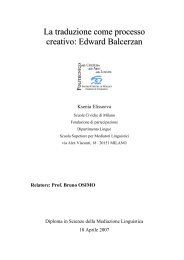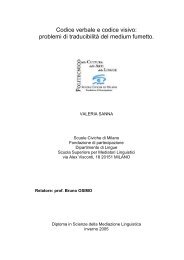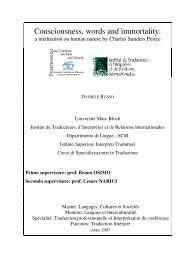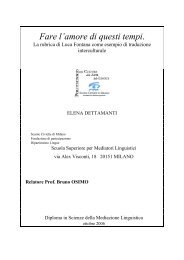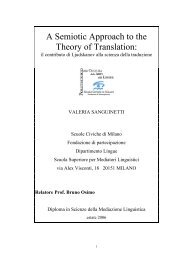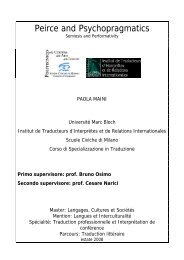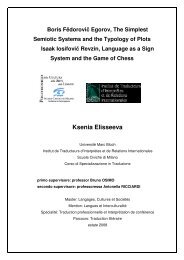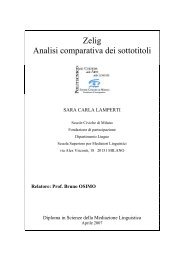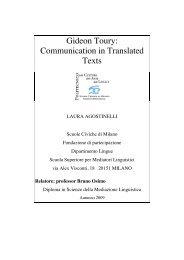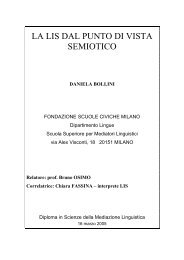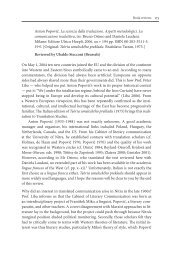Relatore: Professor Bruno OSIMO - Bruno Osimo, traduzioni ...
Relatore: Professor Bruno OSIMO - Bruno Osimo, traduzioni ...
Relatore: Professor Bruno OSIMO - Bruno Osimo, traduzioni ...
You also want an ePaper? Increase the reach of your titles
YUMPU automatically turns print PDFs into web optimized ePapers that Google loves.
the starting point for a discussion about the use of the think-aloud method in<br />
writing research.<br />
2. “To discover and understand general patterns of behavior in the<br />
interaction with documents or applications, in order to create a scientific basis<br />
for designing them” (Krahmer and Ummelen 2004: 1). Carroll, for example,<br />
used TAPs to investigate how learners interacted with new software. It has<br />
been found that they were annoyed by the huge quantity of irrelevant<br />
information contained in tutorial manuals. In fact, manuals appeared not to<br />
satisfy the users’ goals and questions. TAPs analyses also showed how software<br />
users learn to work with a new system; consequently, researchers were able to<br />
develop a new design for software manuals: the minimal manual.<br />
3. To test and revise functional documents and applications such as<br />
manuals and websites. Researchers like Schriver and Nielsen used verbal<br />
protocols (usability testing, pre-testing, formative testing) to gather users’<br />
information to support the design of a specific product (Krahmer and<br />
Ummelen 2004).<br />
4. TAPs IN TRANSLATION STUDIES<br />
The analysis of think-aloud protocols (TAPs) in translation studies began<br />
in Europe in the late 1980s. Scholars felt the necessity to develop empirical<br />
and inductive methods in order to complement the predominantly deductive<br />
and often also normative models of the translation process presented until<br />
then, which usually described what ideally happened or rather – with a<br />
pedagogical aim – what should happen, in translating. It was researchers like<br />
Krings, Königs and Lörscher in Germany, Dechert and Sandrock in Britain,<br />
Jääskeläinen and Tirkkonen-Condit in Finland, who began to ask what<br />
actually happens when people translate (Kussmaul and Tirkkonen-Condit).<br />
This new trend can be partly explained by developments in the adjacent<br />
disciplines: psychology had renewed its interest in the study of the mental<br />
process (as opposed to patterns of external behavior) with the consequent<br />
choice of appropriate or legitimate methods of research. This change had an<br />
18



